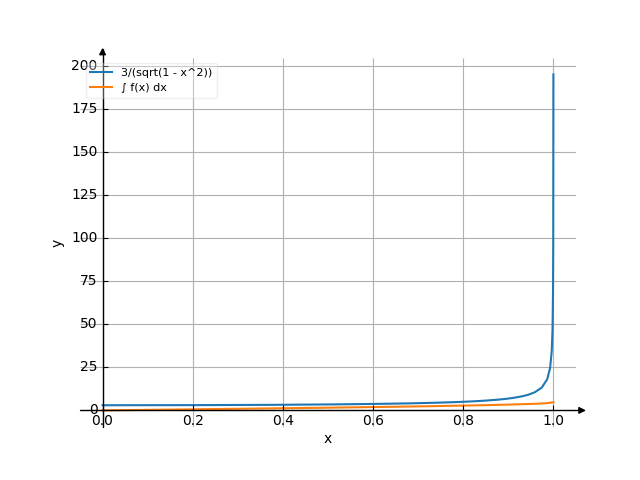Integral of 3/√(1-x^2) dx
The solution
You have entered
[src]
1 / | | 3 | ----------- dx | ________ | / 2 | \/ 1 - x | / 0
Integral(3/(sqrt(1 - x^2)), (x, 0, 1))
Detail solution
-
The integral of a constant times a function is the constant times the integral of the function:
TrigSubstitutionRule(theta=_theta, func=sin(_theta), rewritten=1, substep=ConstantRule(constant=1, context=1, symbol=_theta), restriction=(x > -1) & (x < 1), context=1/(sqrt(1 - x**2)), symbol=x)
So, the result is:
-
Now simplify:
-
Add the constant of integration:
The answer is:
The answer (Indefinite)
[src]
/
|
| 3
| ----------- dx = C + 3*({asin(x) for And(x > -1, x < 1))
| ________
| / 2
| \/ 1 - x
|
/
The graph

Use the examples entering the upper and lower limits of integration.

![Find the integral of y = f(x) = 3/√(1-x²) dx (3 divide by √(1 minus x squared)) - with detailed solution [THERE'S THE ANSWER!] 3/√(1-x^2)](/media/krcore-image-pods/176/hash/indefinite/9/5c/cb58a08f432d8aff944afa812500a.png)
 Integral of (-1+u)/(1+u^2)
Integral of (-1+u)/(1+u^2)
 Integral of y^(-3)
Integral of y^(-3)
 Integral of (x^5)e^(-x^2)
Integral of (x^5)e^(-x^2)